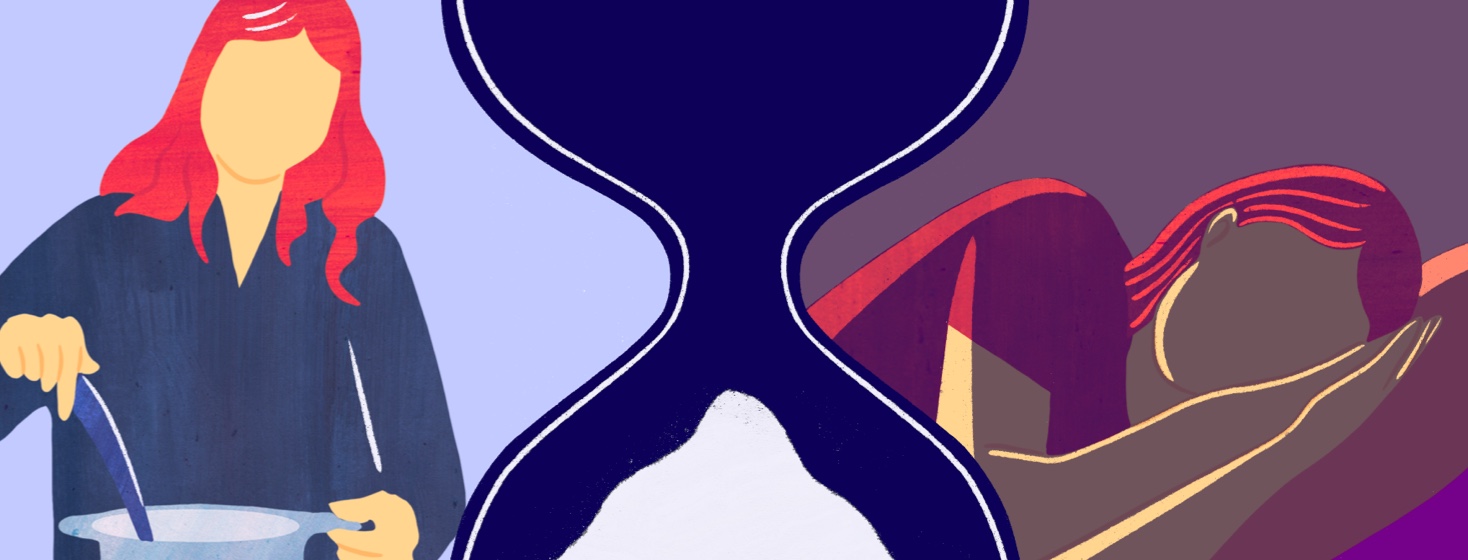Sleep Restriction and Sleep Drive: What Is It?
Many people panic over the idea of doing cognitive behavioral therapy for insomnia (CBTi) because of a component of the treatment called "sleep restriction." CBTi is a top-recommended approach to treating chronic insomnia.1,2
Restrict my sleep? No way! Are you out of your mind?
Correcting the sleep restriction myth
I wanted to explain what sleep restriction is – and what it is not – so that you can consider dropping any unwarranted anxiety you might have about the approach.
Have you ever made a pizza from scratch? Or bought the dough frozen and rolled it out?
What happens if you imagine taking a blob of dough suitable for an 8-inch pizza and rolling it out onto a 12-inch pizza stone? It gets thin in the middle and can kind of smear out and vanish on the edges. It's so thin it doesn't support sauce, toppings, or anything at all.
This is precisely what happens when people sleep for 6 hours – but they lay in bed for 9 hours "hoping for a bit of extra sleep." They might go to bed early, lay in bed late in the morning, or take naps. Sleep becomes worse over time. It's like taking the existing amount of sleep ability and rolling it out into a time in bed that is too large to create good-quality sleep.
What is sleep restriction?
So, first – what it is not. Sleep restriction does not restrict your sleep. It is better described as "time in bed restriction" or "time in bed compression."
Sleep restriction suggests that you remove a part of the time you usually spend in bed awake. This, in essence, gives you a smaller pizza stone for the amount of pizza dough you have. So over time, the pizza dough can thicken up.
What is sleep drive?
Sleep restriction asks people to be up and moving around for longer during the day. This can improve people's ability to fall asleep more quickly by improving their sleep drive or sleep pressure. Then it asks them to get up at a set time of morning every day for a while, essentially maintaining a set-size pizza stone for a bit.
Once the person sleeps more solidly and deeply (a thicker dough forms), they will often get a slightly larger pizza stone to roll their dough onto. They are sleeping for the block of time they aim for, and then the window they sleep within can get larger.
Association between bed and sleep
This happens in part because of the increased sleep drive. But, also, by removing wakeful time in bed "hoping and praying" for more sleep, restriction strengthens the mental and physical associations a person has between their bed and sleep. This powerful psychological shift means the bed is no longer a cue for "anxious worry" but a cue for "rest and sleepy feelings."
This approach is not suitable for everyone and is unsafe for some depending on physical conditions, mental health conditions, and specifics about a person's sleep.
Sleep restriction myth in the name
The harsh rules you read about on the internet simply aren't worth the fear they generate. CBTi should always be delivered and tailored to the individual by a qualified behavioral sleep medicine specialist.
Sometimes, sleep restriction is not even needed as a part of treatment. But if there is just one takeaway message here: Sleep restriction is poorly named, and it does not take away a person's sleep.
If you are interested in pursuing this evidence-based approach to treatment, ask your local sleep center or sleep professional for help.

Join the conversation